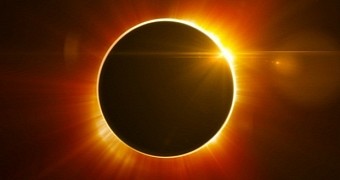In less than an hour from now, at 4:30 a.m. EDT, the Sun, the Moon and Earth will align. During this event, the Moon will move in front of the Sun, hiding it from view. That's right, a total solar eclipse is about to happen.
Unfortunately, not everybody here on Earth will get to marvel at this awesome cosmic occurrence. This is because, what with our planet not being flat and all, the eclipse will only appear as a total one in a few regions.
The best places to watch this total solar eclipse
As illustrated in the image below, only people in the Faroe Islands and in the archipelago of Svalbard will get to witness the Moon covering the Sun in its entirety. Well, them and those cruising the North Atlantic Ocean.
Other folks will feast their eyes on a partial solar eclipse, which is also kind of cool, and the unluckiest of the bunch will see nothing at all and will have to settle for whatever videos and photos of the event make it online.
“100% of the Sun’s disc will be obscured over Norway’s Svalbard islands, 97% from the north of Scotland, 84% over London, 81% over The Hague, 75% over Paris, 65% over Madrid and 56% over Rome,” astronomers explain.
Observers in the Faroe Islands and in the archipelago of Svalbard will see the Sun completely hidden behind the Moon for about two minutes and a half. After this, the silhouette of the star will begin to slowly emerge from the shadow.
If you value your eyes, do not look directly at the Sun
It's important to keep in mind that, when observing a solar eclipse, be it total or partial, one must never ever look directly at the Sun. Those who do risk permanent eye damage, possibly even blindness.
Since human eyes don't pack any pain receptors, this damage will not be immediately obvious. What this means is that, even if you don't feel your eyes hurting while staring at the Sun, this does not mean that they are OK.
Scientists with the European Space Agency plan to have several of the satellites currently orbiting our planet study the eclipse from space and snap pictures of the event.
Whatever images these satellites manage to capture will most likely be made available to the public shortly after the eclipse is over, so stay tuned to catch a glimpse of them.
Update: It's all over now, here's what it was like.

 14 DAY TRIAL //
14 DAY TRIAL // 

